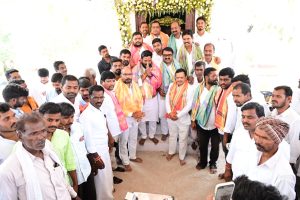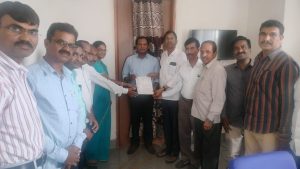Floods management through structural and non-structural strategies – India
Flood management including erosion control falls within the purview of the States. Flood management and anti-erosion projects are formulated and implemented by concerned State Governments as per their priority. The Union Government supplements the efforts of the States by providing technical guidance and also promotional financial assistance for management of floods in critical areas. Flood management measures are broadly categorized as Structural Measures and Non-Structural Measures. Integrated flood approach aims at adopting judicious mix of structural and non-structural measures to provide a reasonable degree of protection against flood damages at economic cost.
To strengthen the structural measures of flood management, Ministry had implemented Flood Management Programme (FMP) during XI & XII Plan for providing Central Assistance to States for works related to flood management, anti-erosion, drainage development, anti-sea erosion, etc. which subsequently continued as a component of “Flood Management and Border Areas Programme” (FMBAP) for the period from 2017-18 to 2020-21 and further extended up to September 2022 with limited outlay. So far Central Assistance amounting to Rs. 6977.43 Crores has been released to Union Territories/State Government under FMP component of this Programme since inception.
For Non structural measures, Central Water Commission (CWC) is the nodal Organisation entrusted with the task of flood forecasting & early flood warnings in the country. Presently, CWC issues flood forecasts for 333 forecasting stations (199 river level forecast stations & 134 dam/ barrage inflow forecast stations). These stations cover 20 major river basins in 23 States & 2 Union Territories. In order to provide more lead time to the local authorities to plan evacuation of people & take other remedial measures, Central Water Commission (CWC) has developed basin wise flood forecasting model based on rainfall-runoff mathematical modelling for 5 days advance flood forecast advisory at its forecasting stations.
In order to formulate the strategy for flood management works in the entire country and river management activities and works in the border areas, a Committee was constituted by NITI Aayog under the chairmanship of Vice Chairman, NITI Aayog and officials from various Departments/ Ministries of Government of India, Experts from the field and Principal Secretaries from States of Jammu & Kashmir, Uttar Pradesh, Bihar, West Bengal, Punjab, Assam, Arunachal Pradesh, Tripura, Madhya Pradesh and Kerala were included as the members of this Committee. The major recommendations as per Report of the above Committee (January, 2021) are-
FMBAP scheme to be continued for the period 2021-26, i.e., co-terminus with the period of 15th Finance Commission with the provision of inclusion of new projects for funding under the scheme. The selection of the schemes will be undertaken in consultation with NITI Aayog and State Government.
Continuous efforts to be made towards modernization in collection of hydro-meteorological data, flood forecast formulation and forecast dissemination. Further simplified data dissemination policy for use of data by the States particularly regarding trans-boundary rivers to be developed.
Focus on scientific research in development of Model based system to forecast flash flood with sufficient lead time will provide a much-needed relief from menace of flash floods.
Rule curve/ level for all reservoirs should be prepared & updated accounting change in rainfall trend and changing demand over the years due to rapid increase of population, urbanisation and industrialisation. Rule curves of major reservoirs, where flood cushion is not in-built, need to be reviewed to have some dynamic flood cushion for major part of the flood season.
The long-term structural solution to floods lies in construction of large storage reservoirs which moderate flood peaks by adopting appropriate reservoir operation schedule.
To get benefit of flood control, it is essential that tendencies like encroachment of natural detention basins are curbed and these basins are restored to their natural state as a measure for flood control.
The projects for interlinking of rivers for diversion of flood water to water scarce areas may be taken up in a time bound manner.
The reclamation of the existing wetlands/ natural depressions should be prohibited by state governments and they should formulate an action plan for using them for flood moderation.
The above recommendations of NITI Aayog Committee have accordingly been taken into consideration while preparing the proposal of continuation of FMBAP for the period 2021-26 and formulation of Policies at central level.
Interlinking of Rivers (ILR) Programme envisages transfer of water from surplus basins to deficit ones and this will help in mitigating the effect of floods and droughts. National Water Development Agency (NWDA) has identified 30 links (16 under Peninsular Component and 14 under Himalayan Component) under National Perspective Plan (NPP) of Govt. of India. Out of 30 identified link projects under NPP, Pre-Feasibility Reports (PFRs) of all the 30 links have been completed and Feasibility Reports (FRs) of 24 links and Detailed Project Reports of 8 links have been completed.
This information was given by the Minister of State for Jal Shakti, Bishweswar Tudu in a written reply in Rajya Sabha on 21.03.2023.




